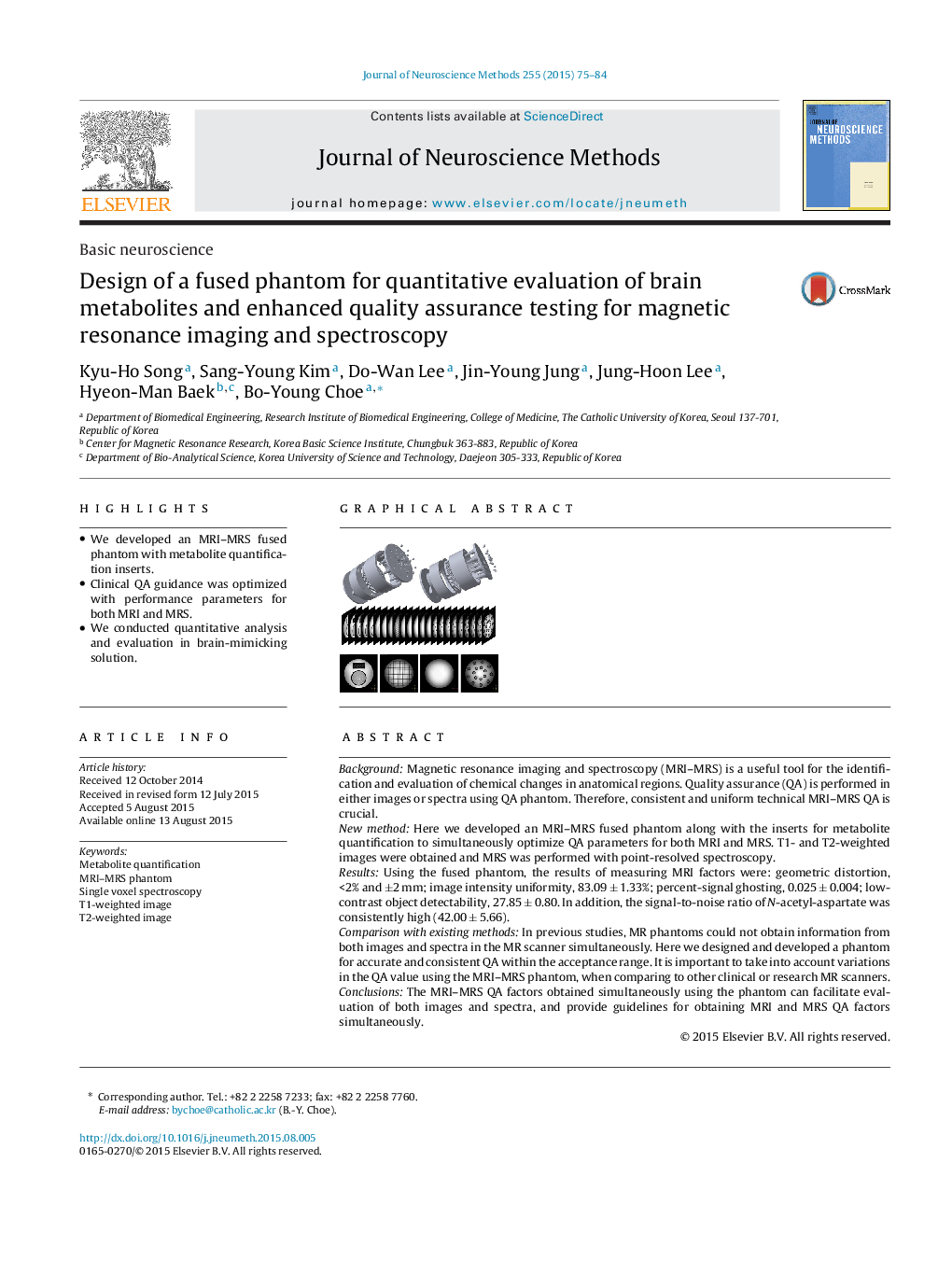| Article ID | Journal | Published Year | Pages | File Type |
|---|---|---|---|---|
| 6267888 | Journal of Neuroscience Methods | 2015 | 10 Pages |
â¢We developed an MRI-MRS fused phantom with metabolite quantification inserts.â¢Clinical QA guidance was optimized with performance parameters for both MRI and MRS.â¢We conducted quantitative analysis and evaluation in brain-mimicking solution.
BackgroundMagnetic resonance imaging and spectroscopy (MRI-MRS) is a useful tool for the identification and evaluation of chemical changes in anatomical regions. Quality assurance (QA) is performed in either images or spectra using QA phantom. Therefore, consistent and uniform technical MRI-MRS QA is crucial.New methodHere we developed an MRI-MRS fused phantom along with the inserts for metabolite quantification to simultaneously optimize QA parameters for both MRI and MRS. T1- and T2-weighted images were obtained and MRS was performed with point-resolved spectroscopy.ResultsUsing the fused phantom, the results of measuring MRI factors were: geometric distortion, <2% and ±2 mm; image intensity uniformity, 83.09 ± 1.33%; percent-signal ghosting, 0.025 ± 0.004; low-contrast object detectability, 27.85 ± 0.80. In addition, the signal-to-noise ratio of N-acetyl-aspartate was consistently high (42.00 ± 5.66).Comparison with existing methodsIn previous studies, MR phantoms could not obtain information from both images and spectra in the MR scanner simultaneously. Here we designed and developed a phantom for accurate and consistent QA within the acceptance range. It is important to take into account variations in the QA value using the MRI-MRS phantom, when comparing to other clinical or research MR scanners.ConclusionsThe MRI-MRS QA factors obtained simultaneously using the phantom can facilitate evaluation of both images and spectra, and provide guidelines for obtaining MRI and MRS QA factors simultaneously.
Graphical abstractDownload full-size image
